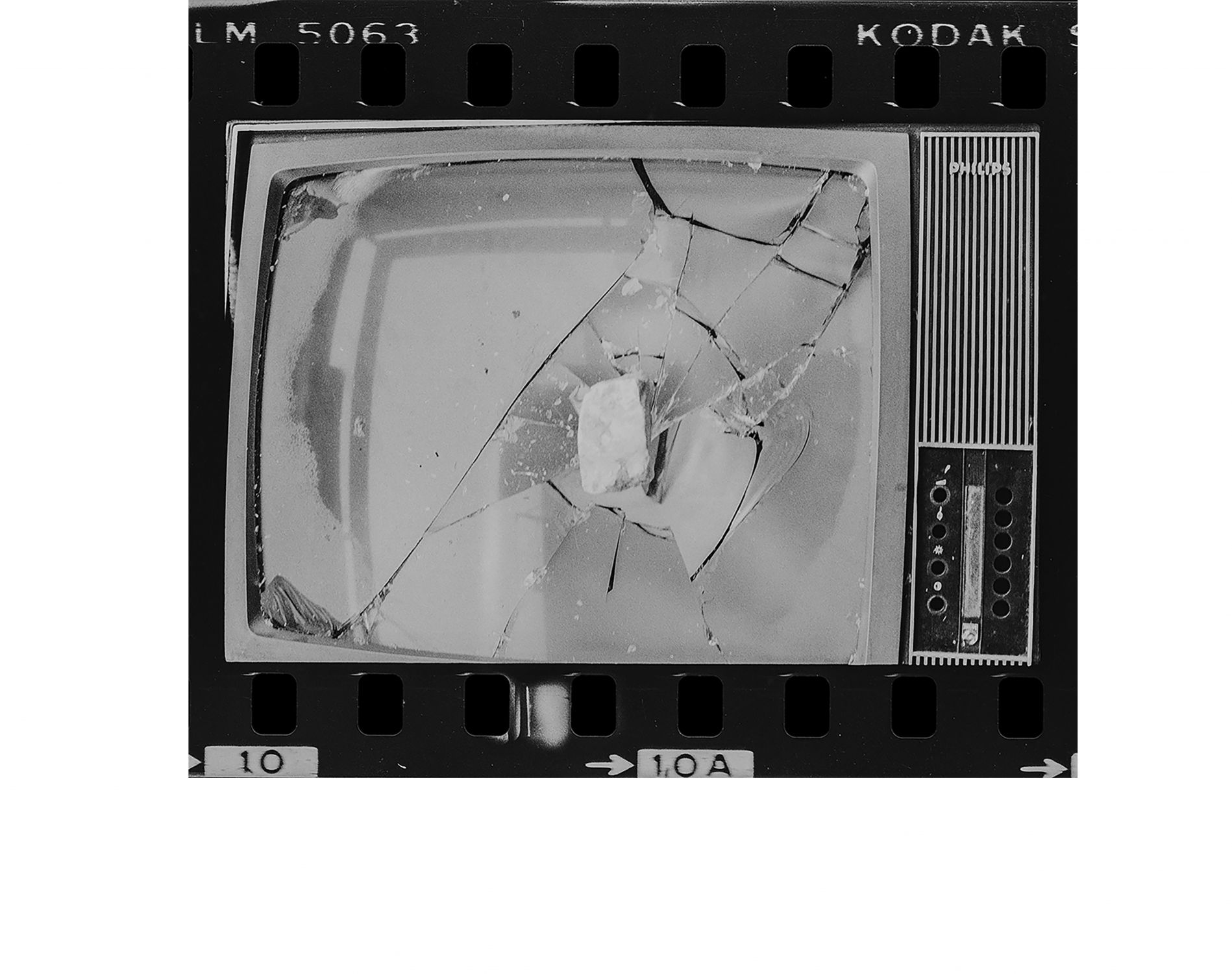Thomas Hirschhorn: Pixel-Collage
Sandra Vieira Jürgens(...) it seems that, in order to be authentic, a picture needs to be pixelated or partly pixelated. Pixelating – or blurring has taken over the role of authenticity. A pixelated picture must surely be authentic if it has unacceptable areas which are concealed. Thomas Hirschhorn
The questioning about the truth or falseness of images is an historical one, as is the questioning of their use, power and efficacy. This is especially important when the images in question are visual representations of war and violence. What should be shown? Which realities are acceptable to be shown and revealed? Is it ethical to confront the viewer with photographs of intolerable situations? Is there any use in representing and making visible pain and death, monstrous events and massacres?
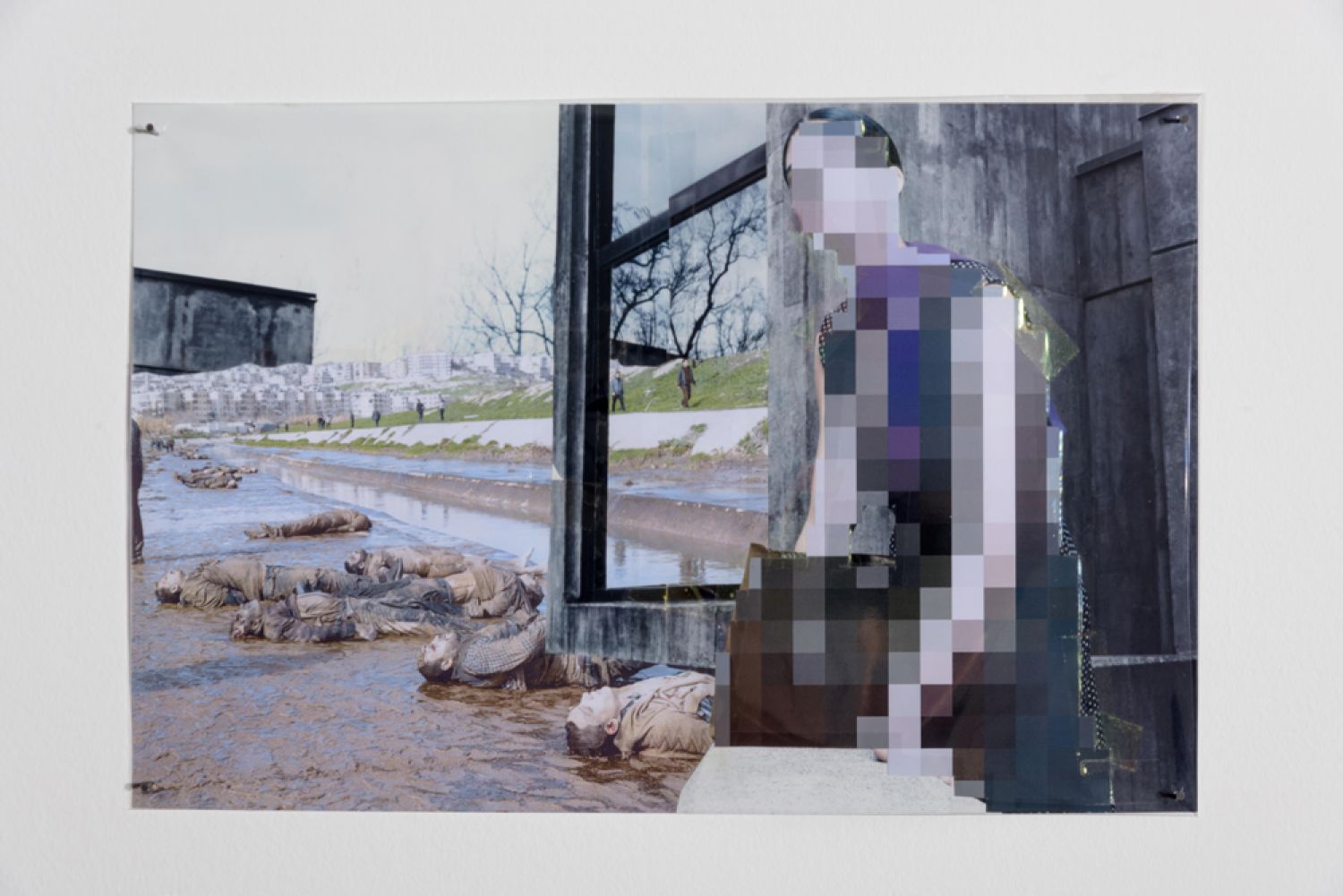
Walter Benjamim, Bertolt Brecht, Susan Sontag, Georges Didi-Huberman and Jacques Rancière are a few of the writers who, in different moments, reflected upon the communicative condition of the image, its ability to represent reality and its strength to critique said reality – in other words, reflections upon the operative power of the image in relation to perception and to consciences. Questions such as «What is the political power and ability of images?» or «What are images capable of?» are associated with ethical and political questions that were also subject to reflection by many generations of artists, from Ancient times to the Avant-garde, with a turbulent passage through the Dadaists; and also by contemporary figures like Marta Rosler, Alfredo Jarr or Omer Fast; and they continue to lie at the center of many reflections, such as the ones included in the edition Que peut une image?, 2014, from Carnets du Bal. I mention this collection because it includes a text by Thomas Hirschhorn – «Pourquoi est-il important, aujourd’hui, de montrer et regarder des images de corps humains détruits?» –, in which, throughout eight points, the artist explains the reasons that led him to insert images of dilacerated bodies in some of his works, namely Superficial Engagement (2006), Concretion (2006), The Incommensurable Banner (2007), Ur-Collage (2008), Das Auge (2008), Crystal of Resistance (2011), Touching Reality (2012), Collage-Truth (2012) and the more recent set of collages Pixel-Collage, displayed at the Chantal Crousel gallery in Paris, which is accompanied by that same text.
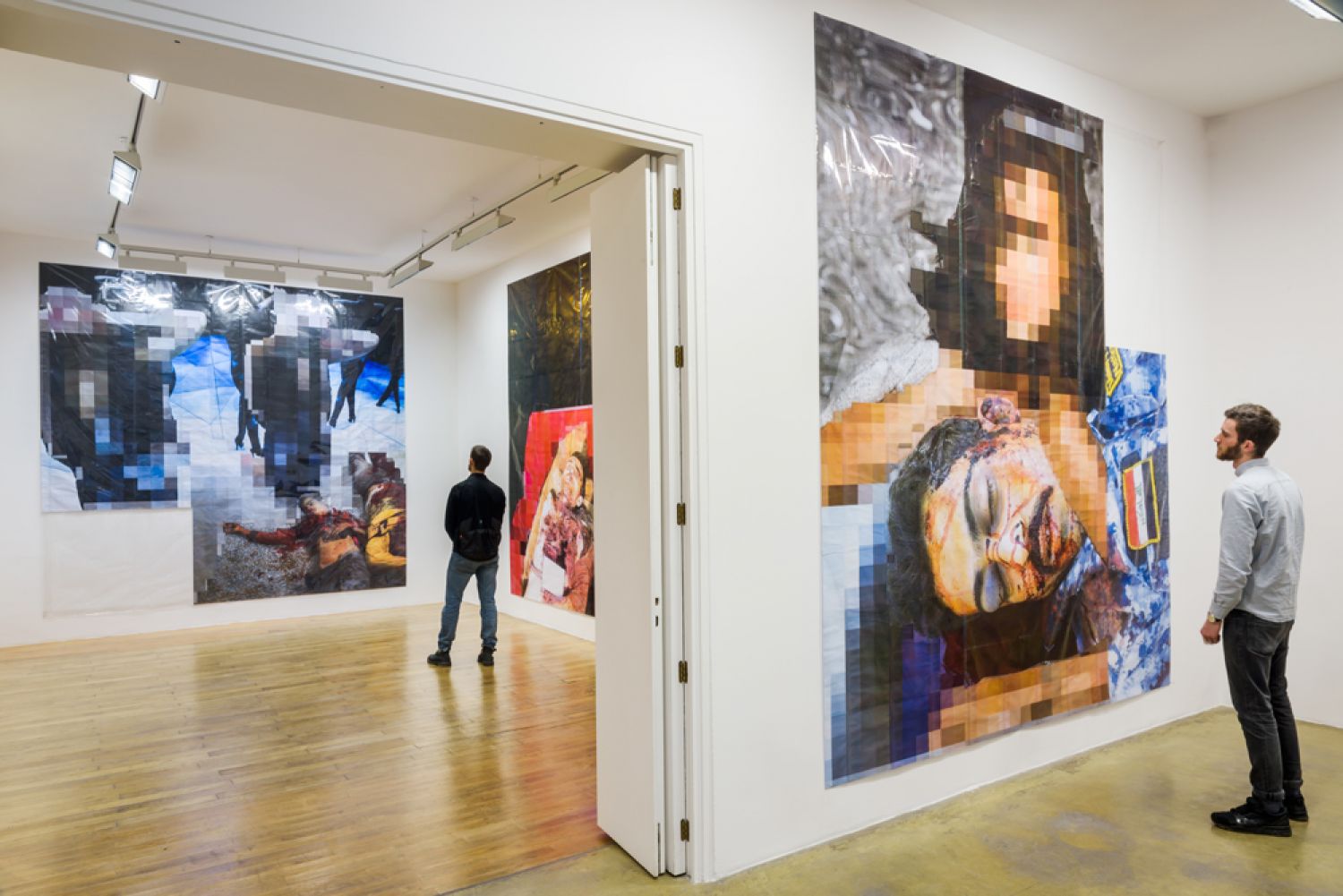
It is precisely in this last solo exhibition that Thomas Hirschhorn questions, through a new series of collages, a particular aspect of this problematic, which he names the aesthetic of the «faceless» – particularly, the increasingly common use by the media of pixels covering and censoring parts of images in order to hide mutilated bodies in war scenes.
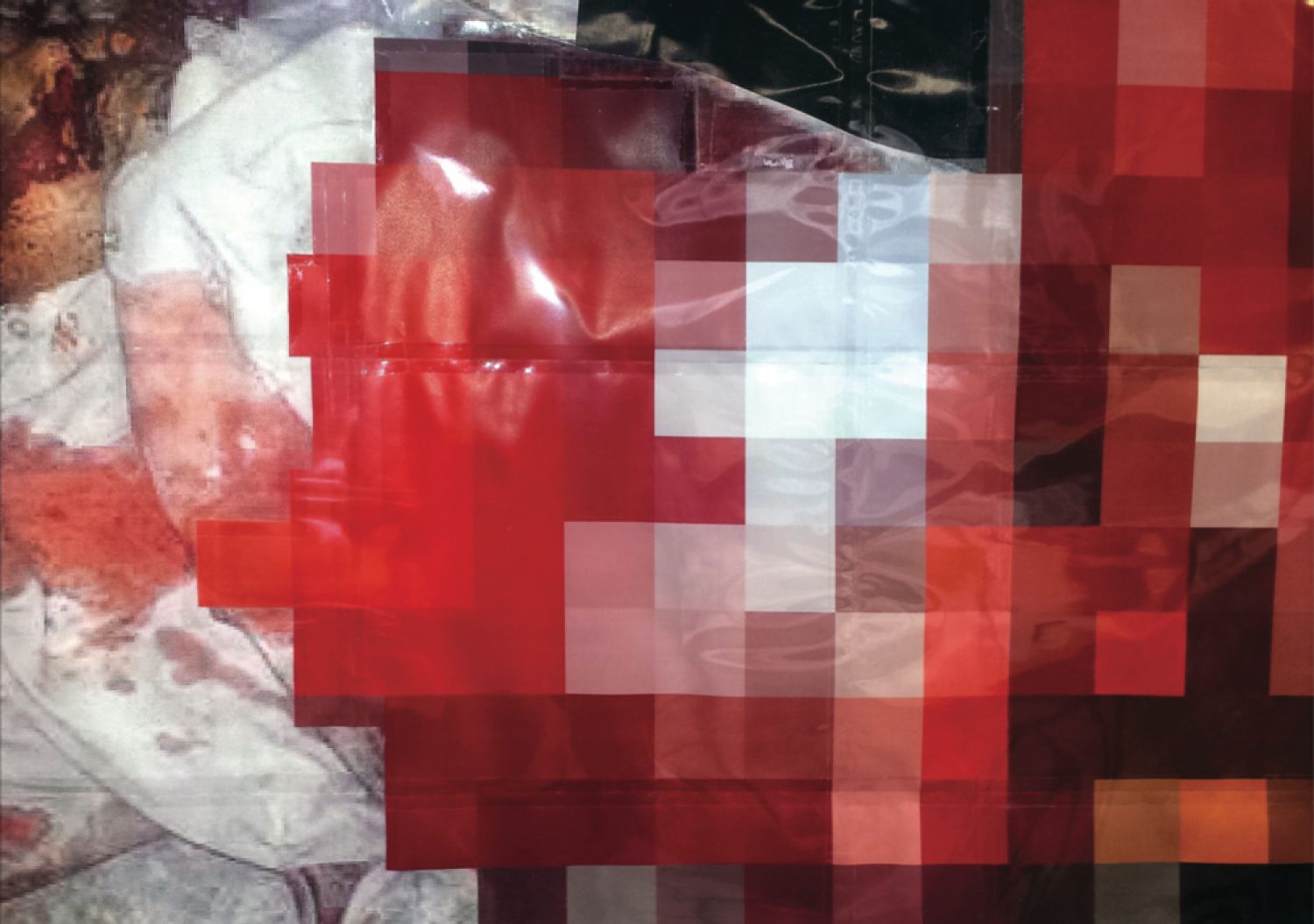
Generally speaking, these are photos by anonymous authors, which contain scenes of extreme violence, published on the Internet by witnesses, activists, aid workers, security agents and police officers, as well as by the fighters themselves. Hirschhorn appropriates them and enlarges them up to a scale typical of advertising billboards, proceeding afterwards with a work of collage of abstract areas, similar to the pixelating effect used over portions of the original photographic information. In many of them, the horror is left uncovered and only portions of the collage with fashion images are pixelated. The growing use of that filter interests him because pixelating and blurring are currently understood as a guarantee of authenticity – as if, in order to be authentic, certain images need to be partially pixelated.
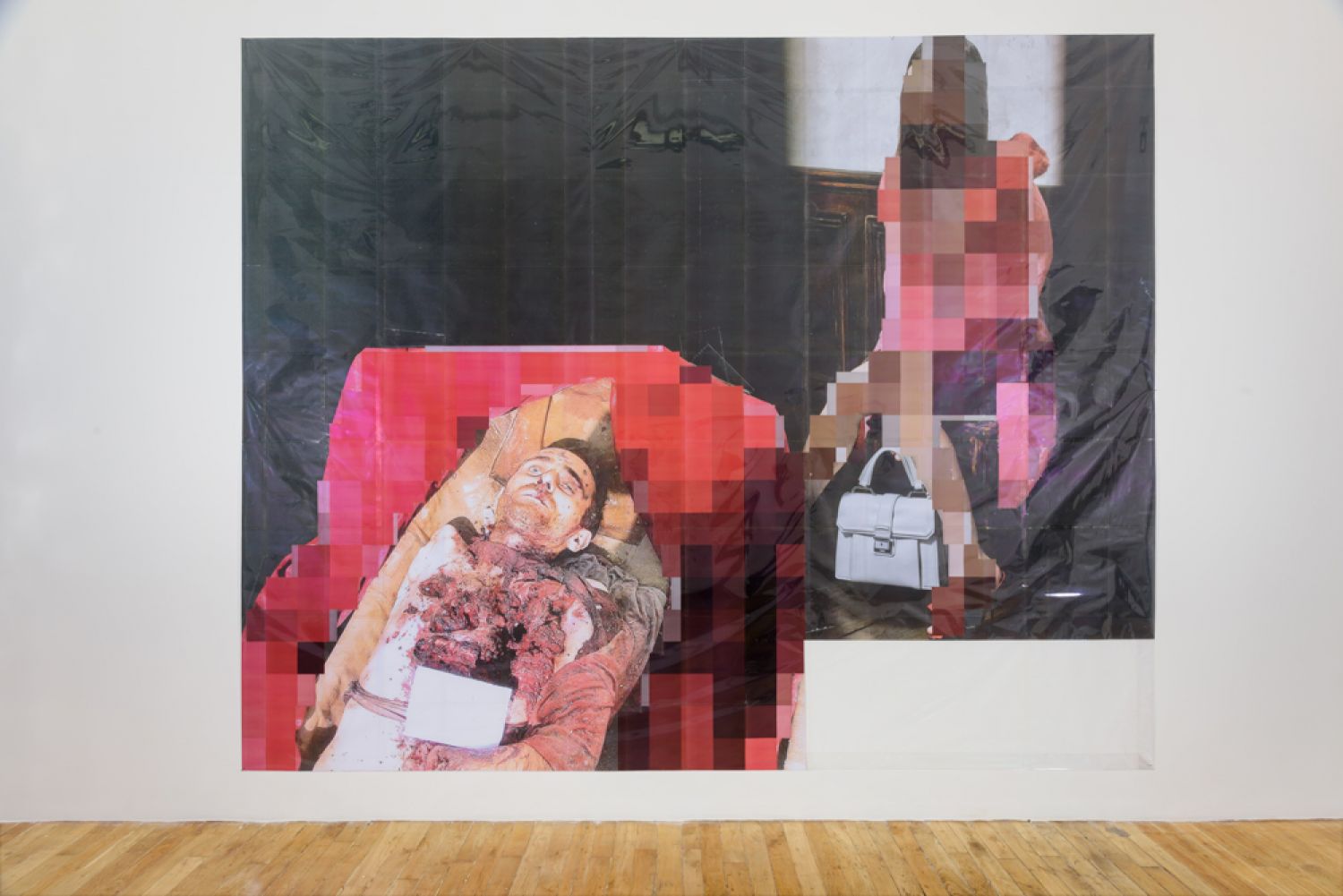
In this work, besides the pixelating and the creation of abstract areas in the image, Hirschhorn satirizes the idea of protection which is implicit in that practice, highlighting in each one of his artisanal collages its covering with a transparent sheet of plastic. However, the source of the images is not clear nor assured, nor is it true the preoccupation that leads to their pixelating in the media, under the pretext of protecting the viewers, spare sensitivities or avoid voyeurism. According to Hirschhorn, the rarefaction of images of destroyed bodies, their invisibility and the manipulation performed by television and the press is a tendency that originated after 9/11 for purposes of propaganda, in order to not demoralize the war effort.
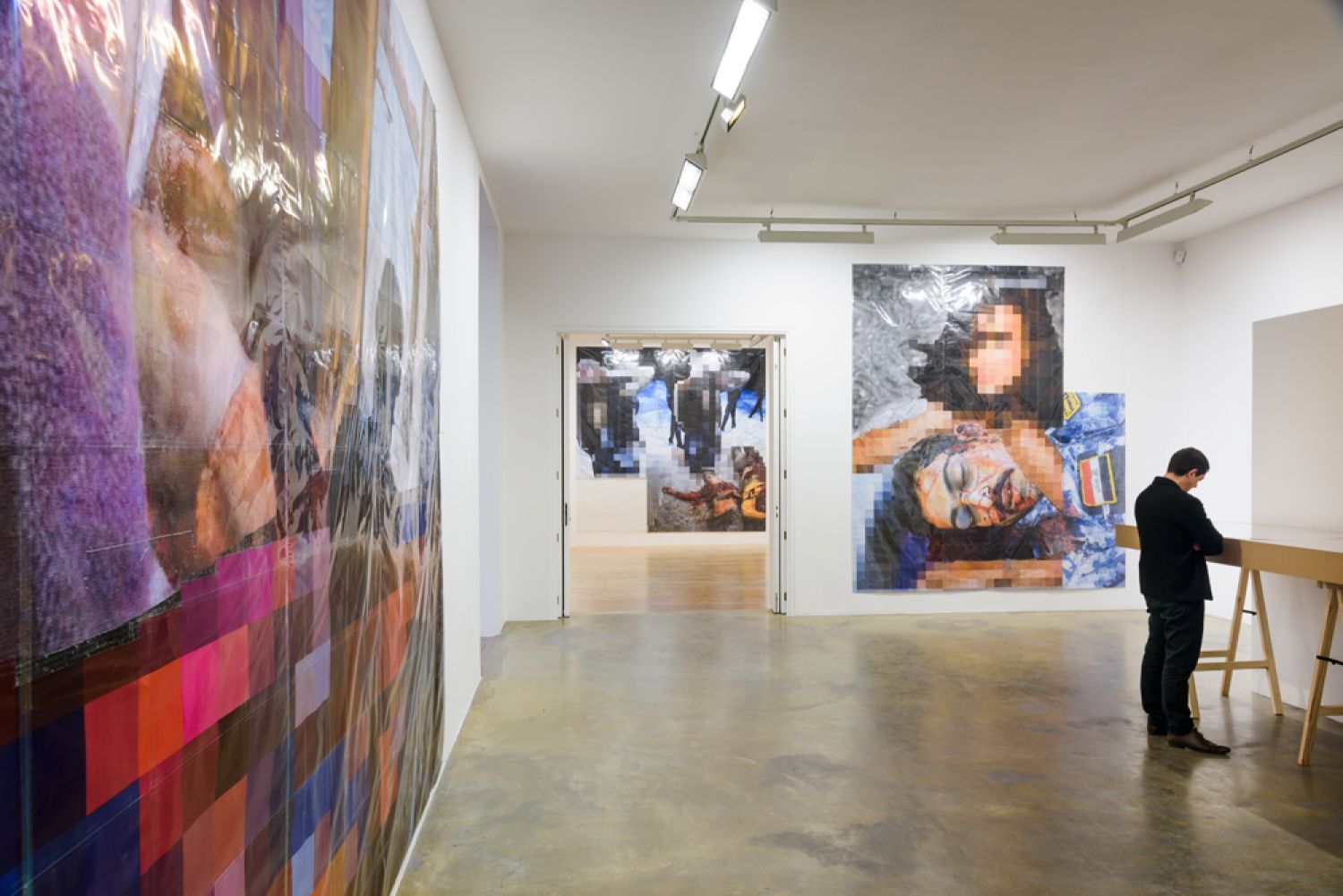
Making no excuses for arguments concerning hypersensitivity, the artist claims that that is the precise reason why it’s important to see those images of dead bodies, for it implies a commitment of a stance against war. One example of the absence of visibility of war and terror, represented only by iconic and abstract moments, is the photograph the artist displays in one of the window cases of the exhibition: the Emergency Situation Room of the White House, when president Barack Obama and other members of his cabinet gathered to watch the unfolding of the operation to assassinate Osama Bin Laden, led by a special operations group of the US Navy in 2011. That image, by itself, conveys absolutely nothing about what was then taking place in Pakistan.
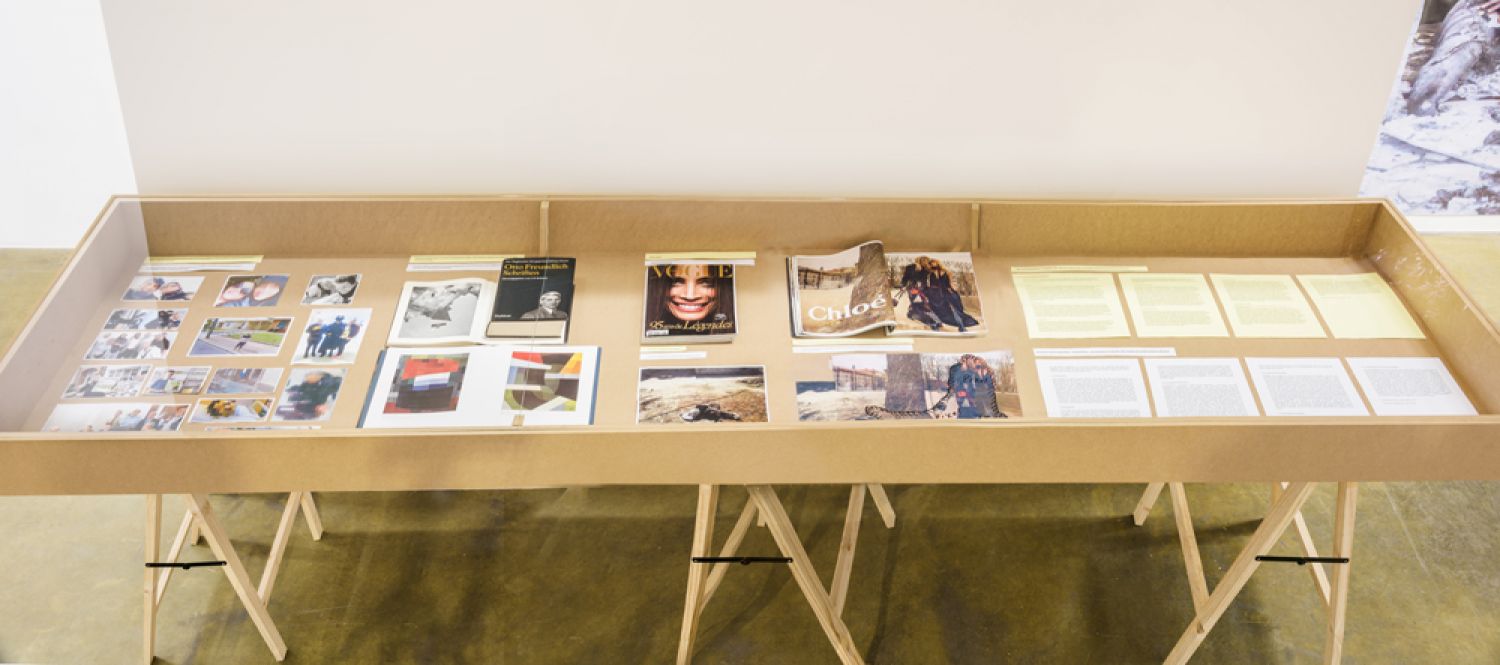
In a moment when Paris marks one year since the attacks on Charlie Hebdo and Hypercacher, Hirschhorn didn’t refrain from placing in that same display window, next to the North-American image, the manipulated photo of Charb holding Charlie Hebdo’s edition with Mohammed’s cartoon, Intouchables, ironically «pixelated». It's a proclamation of lucidity: contemporary communication, beset by self-censorship and the hypersensitivity of a public growingly atomized in irreconcilable factions, is no longer able to read the present in total freedom. That a specific process from photography and video serves to remind cartoonists of this, humorously inoculating their medium, makes all the sense: photography is not alone in its serious ontological crisis. Societies themselves are becoming intouchables in their perception of our time.
[Translation: Teresa Sousa]
